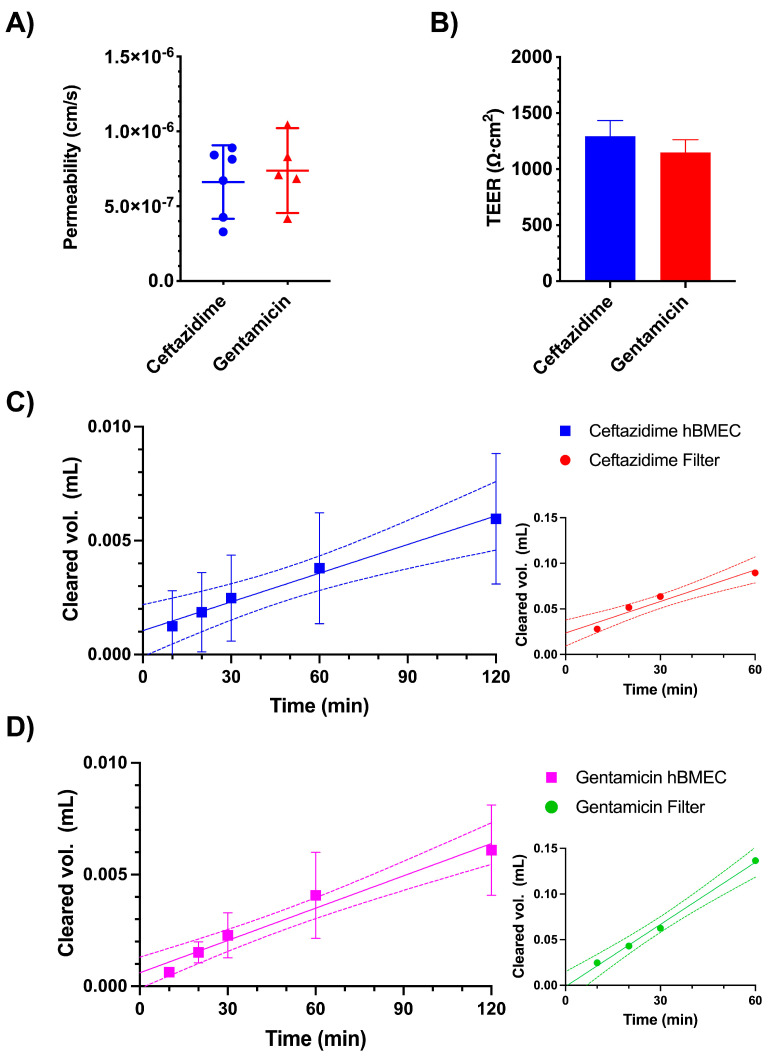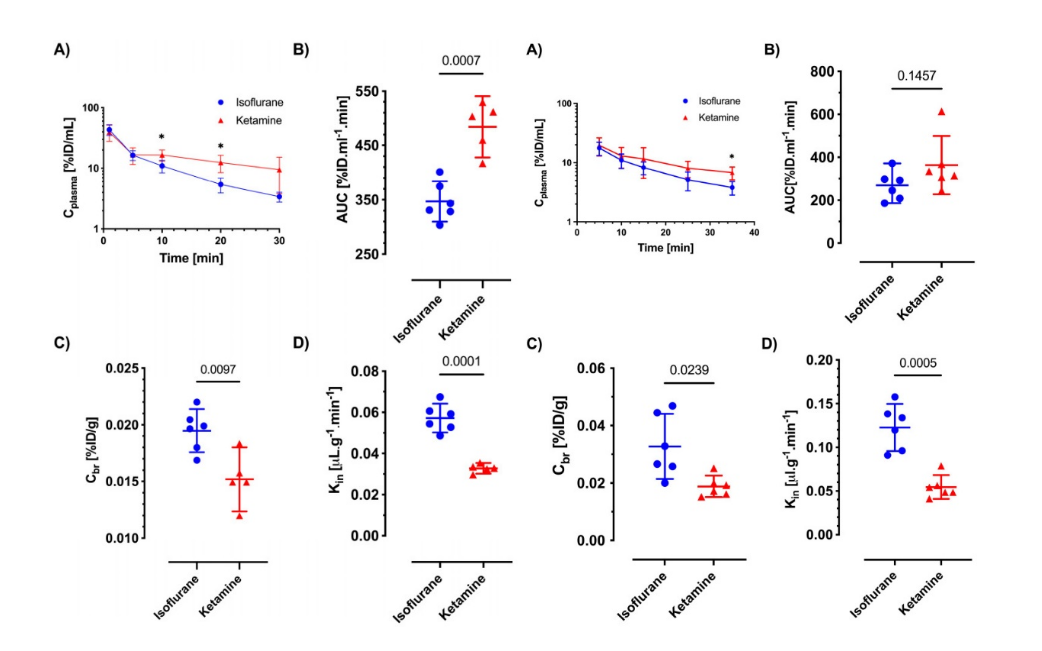Increased Brain Uptake of Gentamicin and Ceftazidime under Isoflurane Anesthesia
Pharmaceutics. 2024 Jan 19; 16 (1): 135.
Authors: Ahn Y, Patil CD, Nozohouri E, Zoubi S, Patel D, Bickel U.
INTRODUCTION
The blood-brain barrier (BBB) maintains a stable microenvironment within the central nervous system (CNS) and is essential to protecting the brain against the entry of harmful endogenous substances and xenobiotics. Some drugs of abuse (nicotine, cocaine, methamphetamine) are known to cause BBB dysfunction, and in recent years, there has been mounting evidence that volatile anesthetic agents in common clinical use, including isoflurane and sevoflurane, increase the permeability of the BBB.
METHODS
- iPSC differentiation into human BMECs was performed using an established protocol. or the permeability experiment, 1 mg/mL of ceftazidime or gentamicin dissolved in EC-medium was added to the upper chamber of the Transwell, including the control wells without cells. The plate was incubated at 37°C on a rocking plate. A total of 50 μL of the samples were collected from the lower chamber of the Transwell at 0-, 30-, 60-, 90- and 120-min time points, and 50 μL of fresh warmed EC-medium was replaced at each time point to maintain the same volume.
- For the in vivo permeability study, male C57BL/6 mice (n = 5-6) were anesthetized using two different types of anesthetic agents: isoflurane and ketamine/xylazine. After the surgical anesthesia stage was achieved, the jugular veins were bilaterally exposed via incision of the neck for IV injections on one side and blood collection from the contralateral side. Antibiotics (ceftazidime or gentamicin) were injected intravenously at a dose of 25 mg/kg. Ceftazidime was administered as a bolus injection, while gentamicin dose was administered via short infusion (5 min) with a constant flow rate of 100 µL/min. A total of 50 µL of blood samples were collected at 1, 5, 10, 20, and 30 min after the drug injection.
- Browse our recommendations
| Product/Service Types | Description |
| iPSC Differentiation | Creative Bioarray has developed protocols for iPSC differentiation to various lineage-committed cell types thereby expanding the scope of your research, drug discovery, or screening projects. |
| Pluripotent Stem Cells | Creative Bioarray offers high-quality and well-characterized ESCs, iPS cell lines, and their derivatives generated from patients and healthy controls. |
| In Vitro Blood-Brain Barrier Assay Service | With decades of operational experience and a technology platform for BBB research, Creative Bioarray has established multiple in vitro BBB models. |
| In Vitro Permeability and Transporters | Creative Bioarray provides several in vitro permeability and transporter assays to evaluate drug permeability and predict drug absorption and distribution. |
RESULTS
- The in vitro permeability was evaluated using induced pluripotent stem cell (iPSC)-derived human brain microvascular endothelial cells (hBMECs) cultured using the Transwell system. The permeability coefficients (P) of ceftazidime and gentamicin were 6.62 × 10−7 ± 2.34 × 10−7 cm/s and 7.38 × 10-7 ± 2.29 × 10−7 cm/s, respectively. For all the Transwells used in this experiment, we ensured consistent barrier integrity of the hBMEC monolayers by measuring the transendothelial electrical resistance (TEER) values before the permeability study, which were 1295 ± 139.0 Ω cm2 for the wells used to measure ceftazidime transport and 1149 ± 113.1 Ω cm2 for the wells used in the gentamicin experiment. The measured clearance data across the monolayers over 120 min or blank Transwell filters over 60 min for ceftazidime and gentamicin, respectively.
 Fig. 1 In vitro permeability analysis using iPSC-derived hBMEC cells in Transwells.
Fig. 1 In vitro permeability analysis using iPSC-derived hBMEC cells in Transwells.
- While there was a significant increase in AUC for ceftazidime under isoflurane (p = 0.0007 vs. ketamine/xylazine), the AUC of gentamicin was not significantly different between the isoflurane and ketamine/xylazine groups. Meanwhile, in terms of brain concentration (Cbr), both ceftazidime and gentamicin showed significantly higher concentrations in the isoflurane group compared to the ketamine/xylazine group (p = 0.0097 and p = 0.0239, respectively). The brain uptake clearance (Kin) of both ceftazidime and gentamicin increased significantly, approximately two-fold, in the isoflurane-exposed groups compared to ketamine/xylazine anesthesia.
 Fig. 2 Left: In vivo permeability for ceftazidime under isoflurane and ketamine/xylazine; Right: In vivo permeability for gentamicin under isoflurane and ketamine/xylazine.
Fig. 2 Left: In vivo permeability for ceftazidime under isoflurane and ketamine/xylazine; Right: In vivo permeability for gentamicin under isoflurane and ketamine/xylazine.
SUMMARY
The present study extends our previous findings with permeability markers and suggests that inhalational anesthetic isoflurane increases the BBB permeability of hydrophilic small-molecule endobiotics or xenobiotics when compared to the injection of ketamine/xylazine. This may be of clinical relevance in the case of potentially neurotoxic substances.
RELATED PRODUCTS & SERVICES
Reference
- Ahn Y, et al. (2024). "Higher Brain Uptake of Gentamicin and Ceftazidime under Isoflurane Anesthesia Compared to Ketamine/Xylazine." Pharmaceutics. 16 (1): 135.



